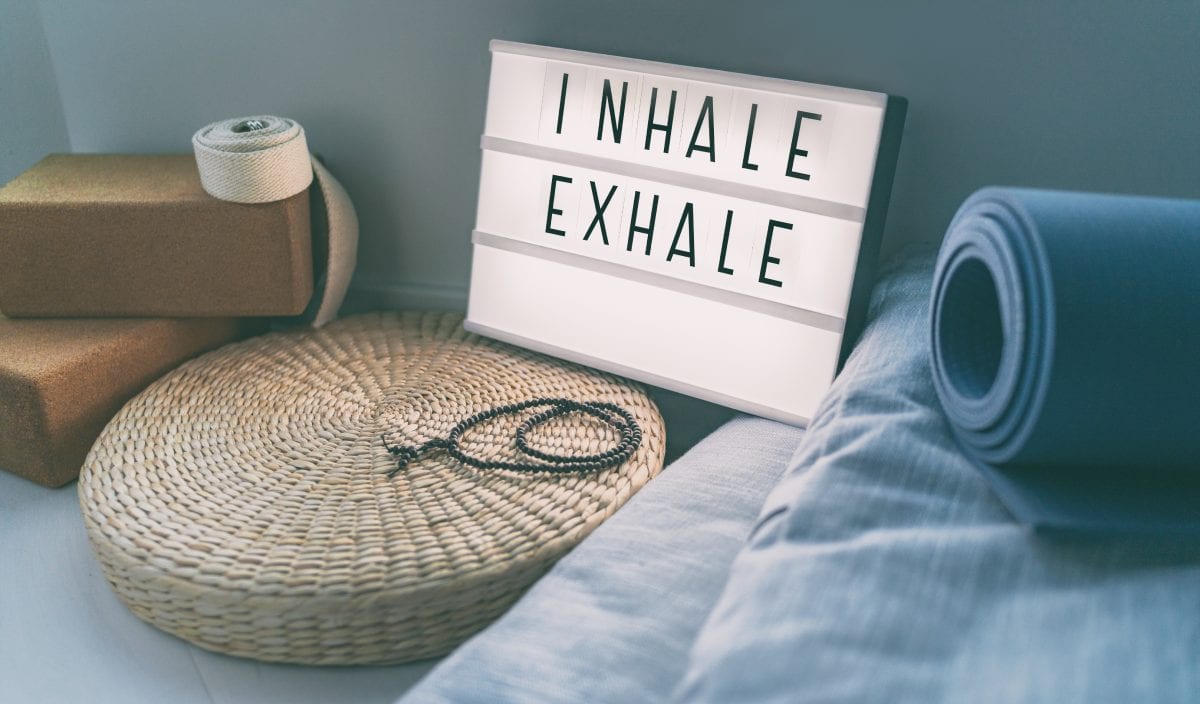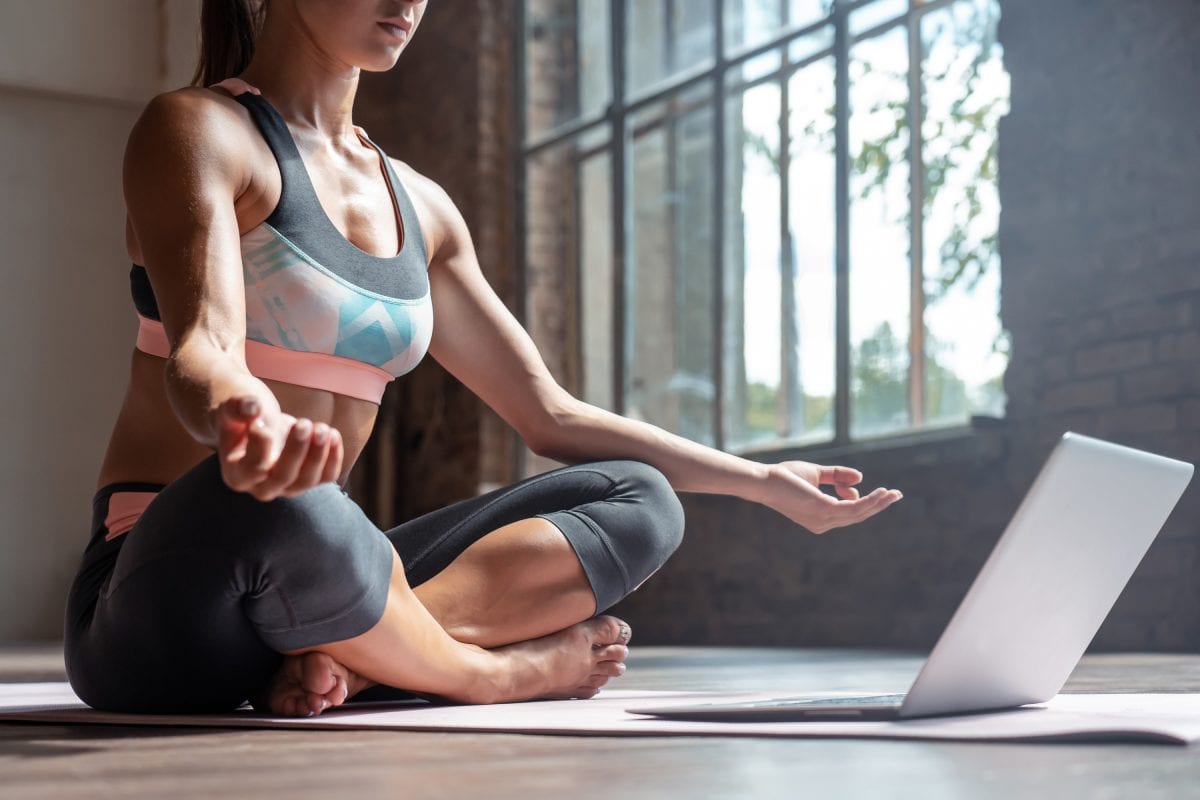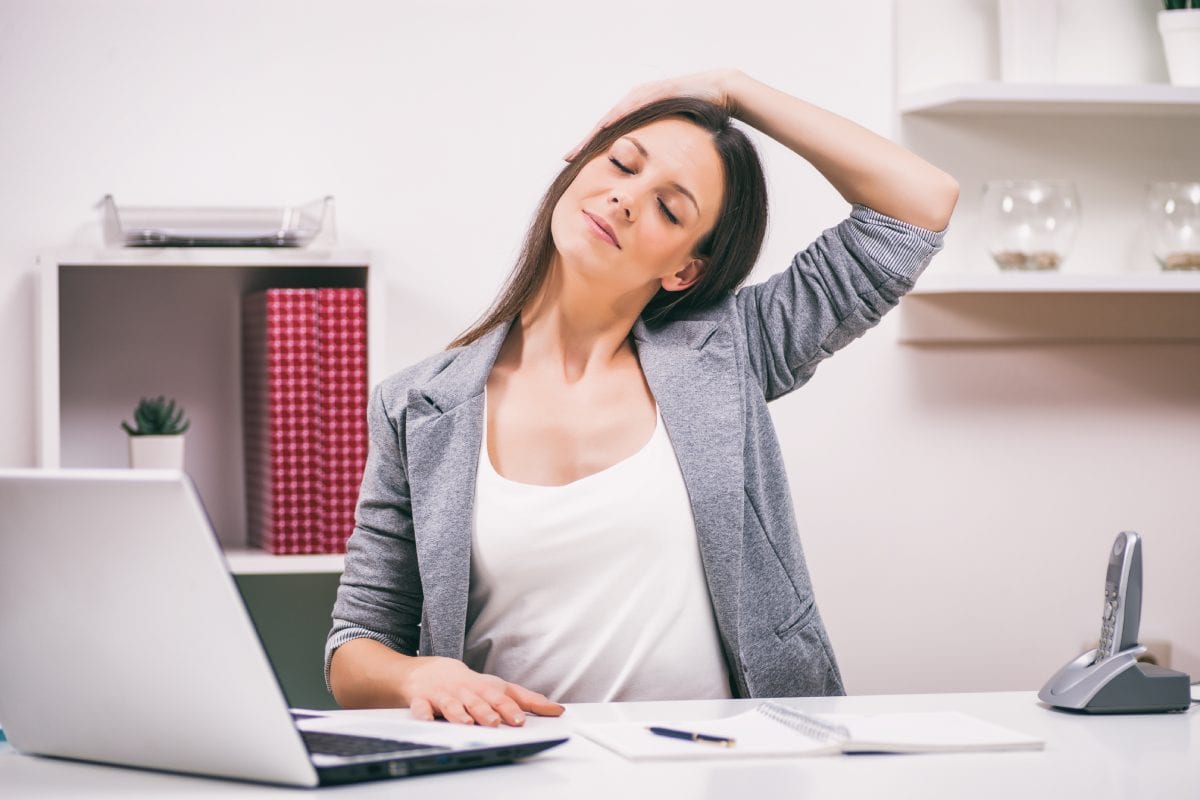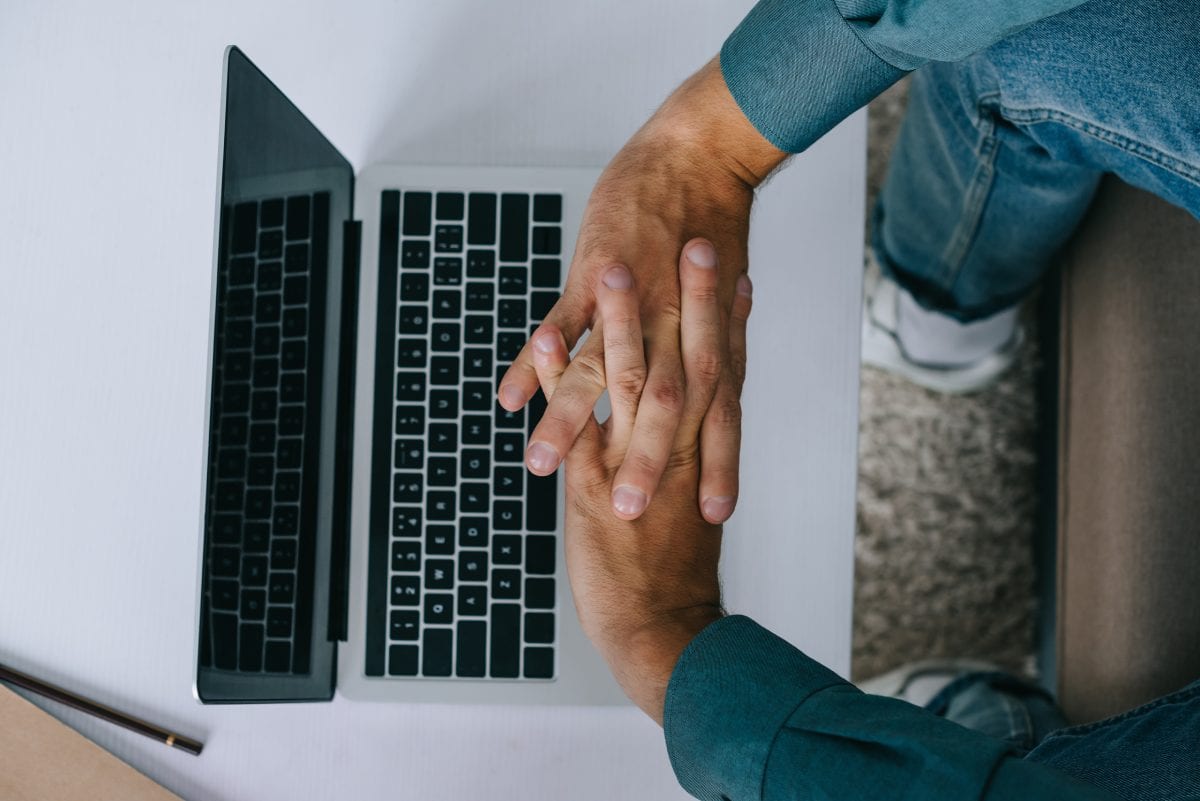Last Updated on May 16, 2024 by Paola Castillo
The need for social distancing during this unprecedented coronavirus outbreak is affecting all of us. You may feel overly stressed and anxious given the uncertainties of today’s world. Maybe you’re working from home now for the first time and sitting in front of your laptop for many hours during the day. Your need for self-care is at an all-time high now, since an after-work escape to the gym or yoga studio is not possible given that most public venues are closed.
But don’t fear! We’re here with a complete desk yoga routine to keep you calm and energized. If you are working at home and tethered to your smart phone and laptop 24/7, simple breathing exercises and yoga-inspired movements are a great remedy for whatever ails you, including feelings of anxiety, stress or physical symptoms like a stiff neck, tight shoulders or low back pain.
Yogic Breathing

Breathing is the essence of life. The practice of yogic breathing – or pranayama – helps pacify the mind and soothe the emotions, even in your most agitated, turbulent state.
When we are feeling stressed, fearful or down, we often gasp – inhaling sharply and then holding our breath. These breathing patterns can activate the sympathetic nervous system, which is often referred to as the “fight or flight response”. Pranayama is meant to expand, intensify and consolidate the energies of the breath by directing, regulating and balancing their flow. This process helps us to break our unconscious breathing patterns and make the breath long, easeful and smooth.
Have you ever heard the advice to “just breathe” when you’re stressed? Although a well-known cliché, it’s true. Slow, deep breaths that engage the abdominal muscles and diaphragm (instead of the muscles in your upper chest and neck) can bring you back from the emotional brink in even the worst situations.
Such breathing techniques support the parasympathetic nervous system and activate what is commonly known as the “relaxation response”, which reduces stress and its negative effects on the mind and body. As a result, we gain greater resilience in the face of adversity, and our minds become less cluttered and frantic. Thus, deep breathing is one of the most efficient ways to center yourself and feel more relaxed, thereby reducing stress and anxiety even in the most challenging moments.
Try These Two Breathing Exercises

1) Breath Observation
Focusing on your breath is a common mindfulness practice. Begin by noticing the breath and not altering it in any way. Become aware of how the breath is flowing and where you are feeling it move in your body. Also, be aware of the details: how does your nose feel? What is the temperature of the air? By being with your breath for a few moments, you can let go of the things happening around you and be present within yourself. Breath observation is also a great way to melt away external stressors, which we could all do with less of right now!
2) Breathe Better with Belly Breathing
Get comfortable by sitting upright in your chair. Make sure that your back is straight against the back of your chair and your feet are planted on the ground. Start to pay attention to your breath. Can you feel any breath filling up your belly? When we are stressed, often times the breath only fills the chest.
Place your hand over your navel. Breathe in through your nose for a count of four, feel your belly expanding and then let your navel rise so your belly extends out. Hold your breath for a count of four. Then let the breath out through your mouth with pursed lips to a final count of four. Repeat three to five times. Check in with yourself – how do you feel?
Deep belly breathing is a great exercise that you can do throughout the day. While this technique takes almost no time and requires no equipment, it quickly increases the supply of oxygen and nutrients to cells throughout the body and aids you in relieving stress and anxiety.
Try Desk Yoga
After a few minutes of deep belly breathing, try some simple yoga poses at your desk. Desk yoga can do much to reverse the damaging effects of extended periods of sitting. Here are eight great poses that you can do quickly at your desk:
1. Neck Stretches

With your head straight, inhale. Exhale and look to your right. Inhale and look ahead. Exhale and look to your left. Repeat.
2. Shoulder Lift
With your head straight, inhale and raise your shoulders toward your ears. Exhale, lower your shoulders and let go. Repeat.
3. Neck Rolls
Start with your head straight. Gently tip your head to your left. Then roll your head back so your eyes face the ceiling. With your head back, roll your head to your right. Next, roll your head so your chin faces down. This stretches the muscles at the back of your neck and contracts those in front. Finish the movement by bringing your head back up to the start position. Repeat.
4. Seated Cat-Cow Pose
Sit on the edge of your seat with a comfortable distance between your knees and your ankles in line with your knees. Place your hands on your thighs and, as you inhale, draw your chest forward and your shoulders back. As you exhale, round your spine and draw your shoulders forward. Look down toward your navel, relaxing your neck and head. Repeat five to six times.
5. Back Release Pose
While seated upright on your seat, cross your left ankle over your right knee, leaving your right foot on the floor. Keep your left foot extended (pulling your toes up toward your body) to help protect the knee. Breathe deeply, taking your attention to your lower back. Fold over, bringing your torso forward to deepen the stretch. Hold in this pose, taking eight to ten deep breaths. Repeat with the right foot.
6. Seated Spinal Twist
Sit up tall and grab the sides of your seat. Inhale and grow taller. Exhale and twist your torso to your right, simultaneously gazing to the right, and hold for ten to twenty seconds. Return to the center. Then repeat on the other side.
7. Thigh Lifts
To strengthen and improve circulation in your legs while seated, lift one leg at a time and imagine that you are lifting the middle of your thigh up to the ceiling.
8. Wrist and Finger Stretch

While seated, take the fingertips of one hand into the palm of your other hand. Extend that same arm forward (at shoulder-height) and gently pull your fingers down toward the back of your wrist until you feel a mild stretch. Then count to five and switch hands.
This exercise will give your wrists relief from typing on your computer and, if practiced regularly, will lower your risk of carpal tunnel syndrome.
Conclusion
Practicing deep breathing and desk yoga for a few minutes throughout the day can help to keep you centered and calm. If you’re finding yourself stuck indoors or at a desk, this can especially translate into greater contentment and productivity.
- 6 Top Grounding Techniques for Calmness, Health and Mindfulness
- Spring Cleaning 101: 5 Ways to Organize Your Room
- 3 Easy, Full-Body Cardio Exercises to Do at Home Without Equipment